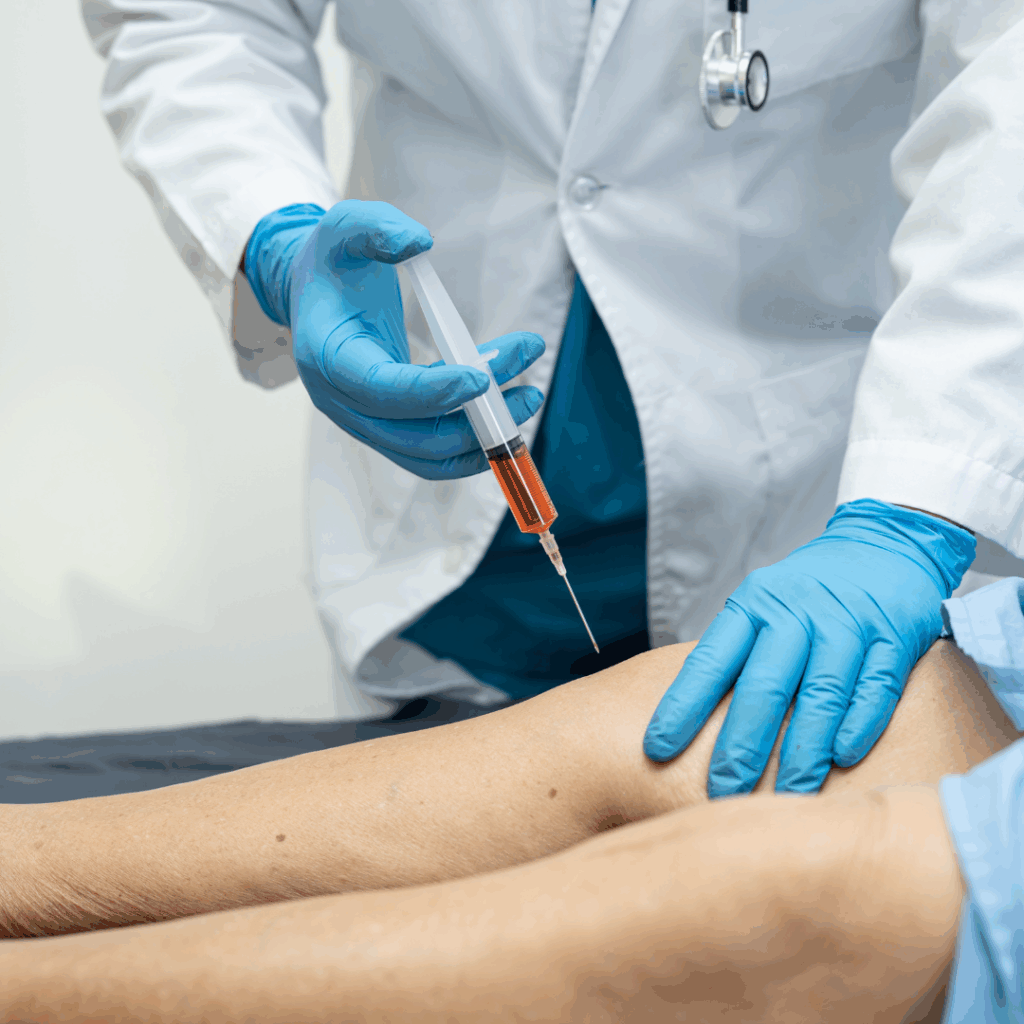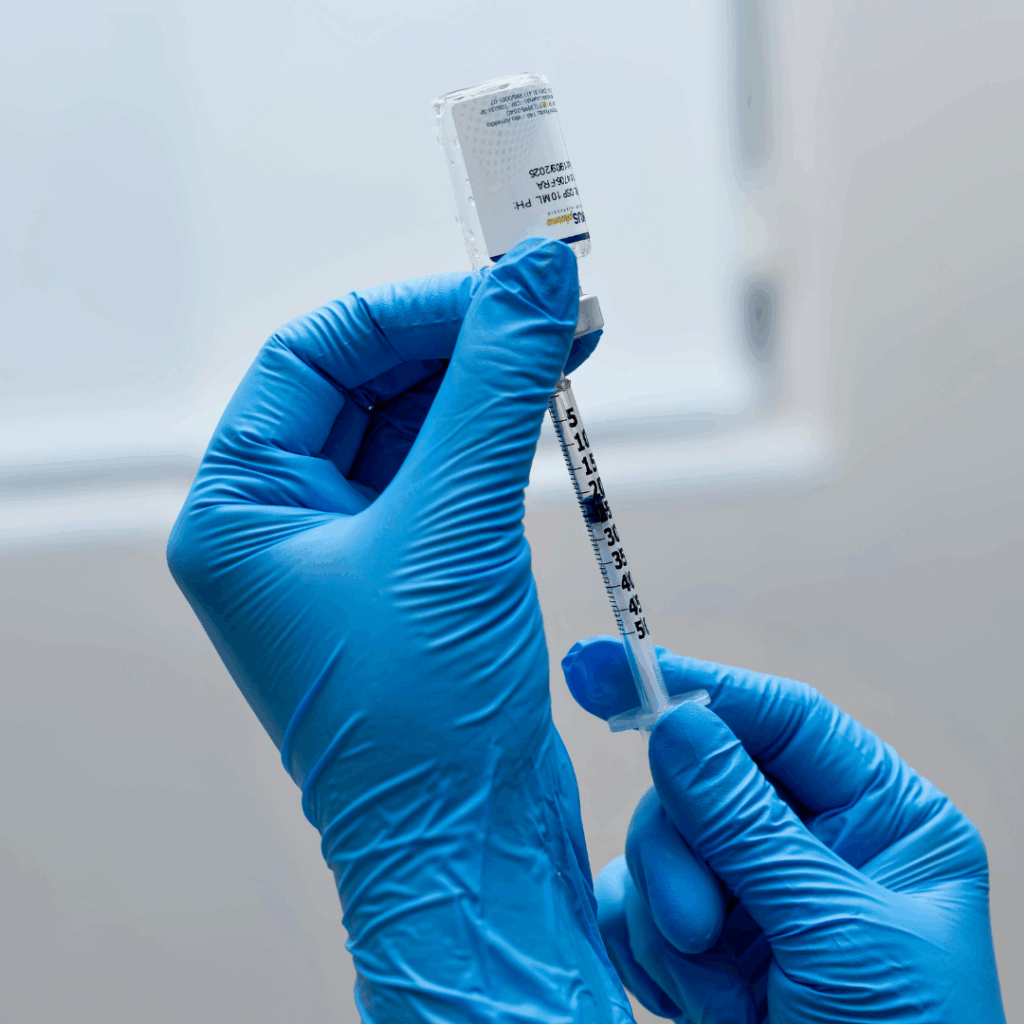PRP Injections are essentially the most recent and one of the most advanced regenerative therapies that have been widely used in orthopedics over the last decade. PRP can still be used post-surgery, although in general, it is a natural and minimally invasive solution to the problem of delayed healing in sports injury, chronic joint pain, or post-surgical recovery.
Dr. Akshay Shetty, an Orthopedic Specialist in HSR Layout, Bangalore, has been very successful in applying PRP (Platelet-Rich Plasma) therapy on patients who got injured ligaments, suffered from tendon-related problems, and had arthritis pain, in his clinic, without the patients going through major surgeries.

What Is a PRP Injection?
PRP injection intends to use the repair power of blood that is within the body to regrow the tissues that have been damaged. The treatment starts with the extraction of a small blood sample from the patient’s arm. This blood is then sent for laboratory tests where it is processed in a centrifuge, hence separating the platelet-rich plasma which happens to be the part of the blood that contains a very high concentration of growth factors-the body’s natural healing elements.
Once they inject this plasma directly into the wound, the idea is that the plasma will act as a stimulus for the production of new cells, it will relieve the swelling and it will also help the damaged tissues to be repaired.
How Does PRP Work?
PRP treatment is alleged to be one of the major factors that make the recovery from an injury faster. The reasoning behind it is that after all, platelets are the ones that contain the most potent proteins and growth factors that eventually lead to tissue regeneration. After concentrated treatment, the platelets would be directly reintroduced back into the site of injury, where:
They will encourage a proliferation of new cells
- Stimulate collagen synthesis
- Encourage perfusion to the injured area
- Mitigate pain and minimize inflammation
All these listed processes will function best when applied to slow-healing musculoskeletal injuries, such as ligament tears, tendonitis, and early osteoarthritis.
Conditions Treated with PRP Injections
Now, PRP injections have gained acceptance in orthopedic and sports medicine. In practice, Dr. Akshay Shetty prescribes these injections to patients with:
- Tennis elbow or Golfer’s elbow
- Ligament and tendon injuries
- Rotator cuff tears
- Osteoarthritis of the knee
- Achilles tendonitis
- Plantar fasciitis
- Muscle strains or sprains
- Healing support after surgical procedures
An amazing treatment available both to speed recovery in athletes and to relieve pain from degenerative joint conditions in the elderly.

PRP Injection Procedure: What to Expect
This procedure is carried out on an outpatient basis. It lasts about 45–60 minutes. Here is how Dr. Akshay Shetty’s patients can expect the PRP session to differ from other opinions:
Blood collection: A small sample of blood (down between 15 and 30 ml) is drawn.
Centrifugation: The blood is spun in a centrifuge to obtain platelet-rich plasma.
Injection site preparation: Cleansing and numbing of the area to be treated is done.
PRP Injection: Injection of concentrated PRP into the area with guided intervention of ultrasound.
After injection, patients are advised to take short rest. For the one or two days post-injection, some mild soreness along the lines of tenderness may be felt — normal signs indicating that the healing process is very much underway.
Recovery and Results
A major benefit is the very minimal downtime associated with the procedure. Most patients report being able to resume light activities within one to two days with continued avoidance of vigorous activity for a week.
The laser healing will pick up over several weeks. Patients generally notice improvements in pain, mobility, and joint function from four to six weeks, with chronic conditions often requiring more than one session to yield substantial results.
Reasons Why PRP Injection Rates Over Other Treatments
Several reasons make PRP therapy stand out.
- Biological Healing: Leverages the power of one’s platelets-for this reason, no foreign products enter the body.
- Less Invading: Does not need any cuts made by the surgeon-this means no overnight hospital stay.
- Fast Recovery: It allows a much faster recovery than standard physiotherapy by itself.
- Less Dependence on Painkillers: Many of the patients were able to down-taper or completely cease their use of painkillers after PRP.
- Suited to Acute and Chronic Injuries: The injections work on recent injuries as well as prolonged joint issues.
PRP injections “bridge the gap between conservative treatments and surgery,” Dr. Akshay Shetty explains, “which makes it a regenerative treatment that empowers the body to heal itself.”
Safety and Side Effects
The procedure is considered to be safe because it utilizes the individual’s own blood. When done correctly by an experienced orthopedic physician, the chance of any allergic reaction occurring or the risk of infection developing is extremely low.
Injection site pain and swelling may occur in some patients, but those usually resolve within a few days.
Who Is an Ideal Candidate for PRP Injection?
PRP treatment will be beneficial to people who:
- Suffer from chronic tendon, ligament, or joint pain
- Wish to extend the least surgical occurrence or chemical treatment
- Remain unsuccessful against physiotherapy or medication intervention
- Desire a natural and enduring method of recovery
Dr. Akshay Shetty will ascertain from the medical history and imaging tests whether the PRP therapy can be a good option for you.
PRP Injection at Dr. Akshay Shetty’s Sports Clinic in HSR Layout
PRP procedures at Dr. Shetty’s HSR Layout Orthopedic Clinic follow a very modern approach with contemporary machinery and strict sterilization practices. It involves a customized treatment plan to ensure maximum effectiveness and safety.
The patients are further assisted through complete pre-procedural preparation and post-injection care to guarantee the most comfortable and smooth recovery.
Conclusion
PRP injection represents the way of the future in treating orthopedic and sports injuries: the union of the science of biology and the self-healing capacity of the body. For those suffering from joint pain, ligament injuries, or tendon issues, it provides a natural and promising, effective means of quicker healing and regaining function.
If you are toying with the thought of getting PRP therapy in Bengaluru, consult with Dr. Akshay Shetty, an advanced orthopedic specialist committed to providing care that is cutting-edge and evidence-based, personally tailored to you.

Leave a Reply